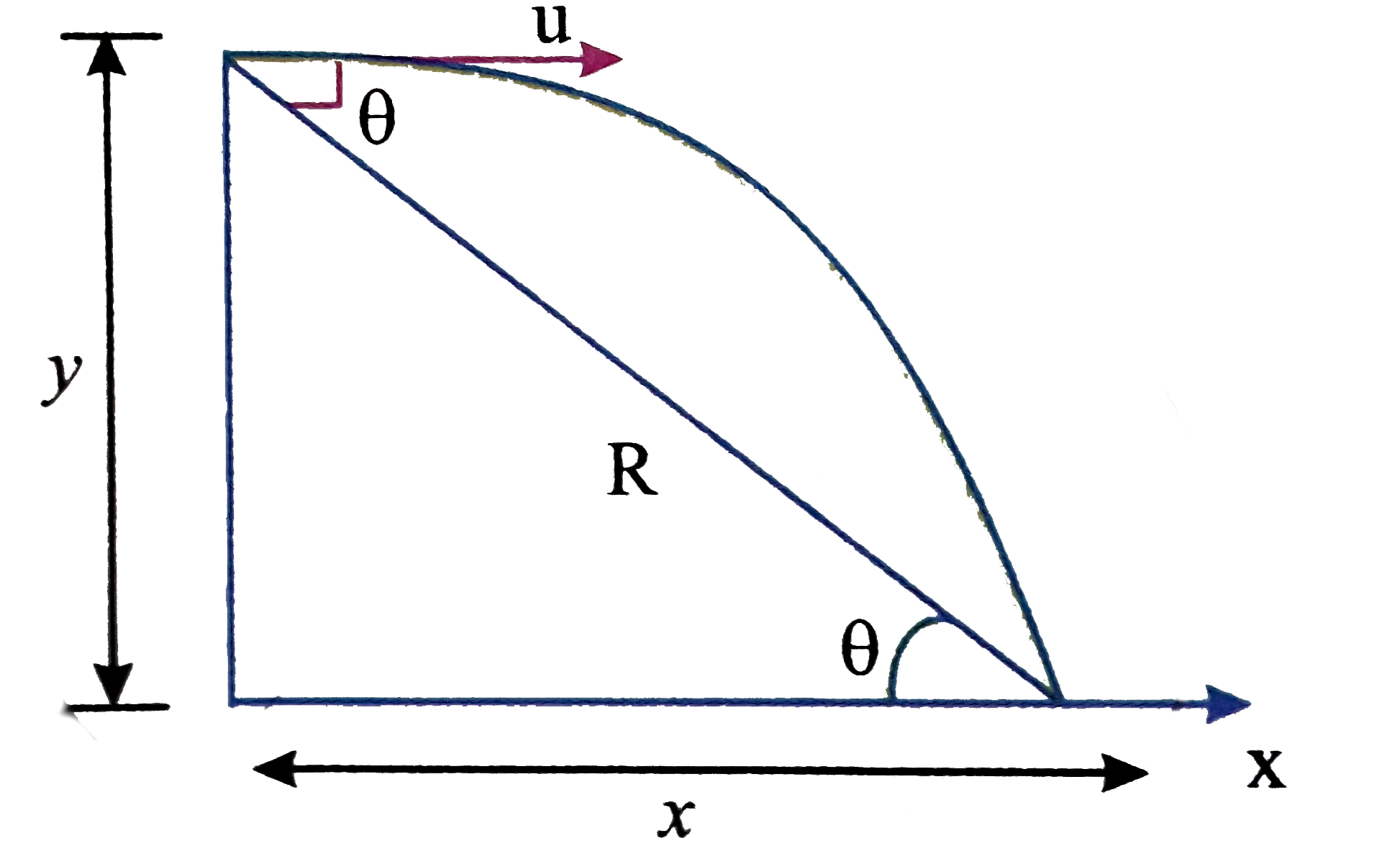A particle is projected along the line of greatest slope up a rough plane inclined at an angle of 45∘ with the horizontal. If the coefficient of friction is 1/2 . Their retardation is:
g√2
g2√2
g√2(1+12)
g√2(1−12)
The correct Answer is:C
To solve the problem, we need to find the retardation of a particle projected up a rough inclined plane at an angle of 45∘ with a coefficient of friction of 12.
1. Identify Forces Acting on the Particle:
- The weight of the particle acts downwards, which can be resolved into two components:
- Perpendicular to the incline: mgcosθ
- Parallel to the incline (down the slope): mgsinθ
2. Determine the Normal Force:
- The normal force N acting on the particle is equal to the component of the weight perpendicular to the incline:
N=mgcosθ
- For θ=45∘:
N=mgcos45∘=mg⋅1√2=mg√2
3. Calculate the Frictional Force:
- The frictional force f can be calculated using the formula:
f=μN
- Substituting the values:
f=12⋅N=12⋅mg√2=mg2√2
4. Set Up the Equation of Motion:
- The net force acting on the particle when it is projected up the incline is:
Fnet=−mgsinθ−f
- For θ=45∘, mgsin45∘=mg√2:
Fnet=−mg√2−mg2√2=−(2mg2√2+mg2√2)=−3mg2√2
5. Apply Newton's Second Law:
- According to Newton's second law, Fnet=ma:
−3mg2√2=ma
- Dividing both sides by m:
a=−3g2√2
- The negative sign indicates that this is a retardation (deceleration).
6. Final Expression for Retardation:
- Therefore, the retardation a is:
a=3g2√2
- The weight of the particle acts downwards, which can be resolved into two components:
- Perpendicular to the incline: mgcosθ
- Parallel to the incline (down the slope): mgsinθ
- The normal force N acting on the particle is equal to the component of the weight perpendicular to the incline:
N=mgcosθ
- For θ=45∘:
N=mgcos45∘=mg⋅1√2=mg√2
- The frictional force f can be calculated using the formula:
f=μN
- Substituting the values:
f=12⋅N=12⋅mg√2=mg2√2
- The net force acting on the particle when it is projected up the incline is:
Fnet=−mgsinθ−f
- For θ=45∘, mgsin45∘=mg√2:
Fnet=−mg√2−mg2√2=−(2mg2√2+mg2√2)=−3mg2√2
- According to Newton's second law, Fnet=ma:
−3mg2√2=ma
- Dividing both sides by m:
a=−3g2√2
- The negative sign indicates that this is a retardation (deceleration).
- Therefore, the retardation a is:
a=3g2√2
Similar Questions
A brick of mass 2kg begins to slide down on a plane inclined at an angle of 45∘ with the horizontal. The force of friction will be
View SolutionA particle is projected horizontally with a speed u from the top of plane inclined at an angle θ with the horizontal. How far from the point of projection will the particle strike the plane ?

View Solution
Knowledge Check
A block of mass 3 kg rests on a rough inclined plane making an angle of 30∘. With the horizontal. The coefficient of static friction between the block and the plane is 0.7. The frictional force on the block is
A9.8 NB0.7×9.8×√3 NC9.8×√3 ND0.7×9.8 N
A ball is projected horizontally with a speed v from the top of the plane inclined at an angle 45∘ with the horizontal. How far from the point of projection will the ball strikes the plane?
View SolutionA block slides down an inclined plane that makes an angle θ with the horizontal. If the coefficient of kinetic friction is μ, find the acceleration of the block.
View SolutionA block is projected up along the line of greatest slope of an inclined plane of angle of inclination 0(<ϕ) where ϕ= angle of friction. Which of the following friction time graph is CORRECT ?
View SolutionAn object is thrown along a direction inclined at an angle of 45∘ with the horizontal direction. The horizontal range of the particle is equal to
View SolutionA block is pushed up a rough inclined plane of 45°. If the time of descent is twice the time of ascent, the coefficient of friction is
View SolutionA uniform disc of mass m and radius R is rolling up a rough inclined plane which makes an angle of 30∘ with the horizontal. If the coefficients of static and kinetic friction are each equal to μ and the only force acting are gravitational and frictional, then the magnitude of the frictional force acting on the disc is and its direction is .(write up or down) the inclined plane.
View SolutionA body of mass 5×10−3 kg is launched upon a rough inclined plane making an angle of 30∘ with the horizontal. Obtain the coefficient of friction between the body and the plane if the time of ascent is half of the time of descent.
View Solution
